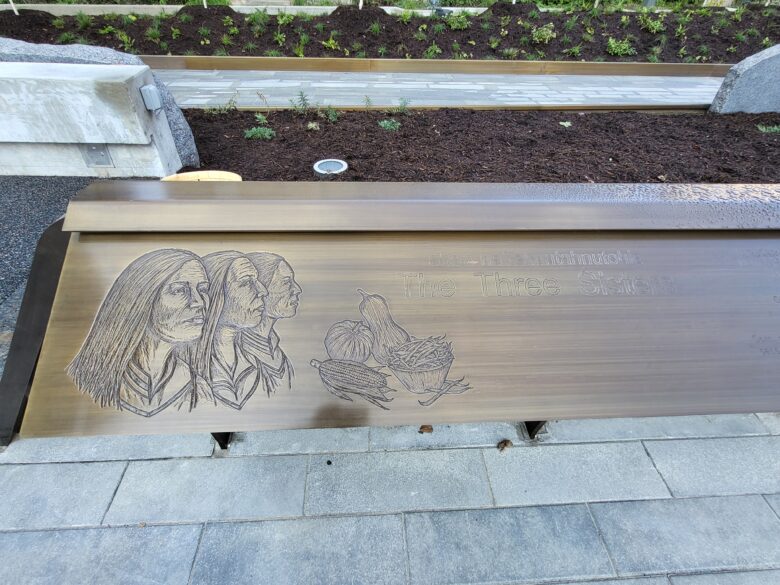Service: Mechanical Engineering
The Co-operators Calgary
Tenant Fitout
This project focused on a tenant renovation of two floors in The Co-operators' newly-acquired downtown Calgary office space, and comprised 40,000 square feet. The project has been certified WELL Gold.
Our approach included early coordination with the landlord to ensure handover conditions suited the client’s requirements, as well as close coordination with the construction manager in creating a pre-order due to a condensed construction schedule.
The construction schedule was a key challenge of the project along with the timing of tender. The completion date was an unmovable milestone as the client’s lease was expiring at their other location. At time of tender, product and material availability were fluctuating, which created uncertainty around delivery. To meet the deadline, our team was tasked to do everything possible to ensure the success of the project and keep the schedule on track.
To help ensure timely delivery, our team incorporated a pre-order package for the construction manager to tender, which allowed products to be reviewed and released ahead of the official tender. This effort was successful and was completed according to plan; however, some delivery delays were unavoidable, due to market conditions. To mitigate the impact, we were then tasked with contacting industry partners to help expedite deliveries. In addition, alternative temporary designs were implemented to ensure the move-in date could be met by planning the switchover date once the outstanding equipment arrived.
The Calgary office marks our fifth tenant improvement project for The Co-operators, following similar fitouts for their locations in Guelph ON and Regina SK, as well as pilot projects in Montreal QC and Burlington ON.
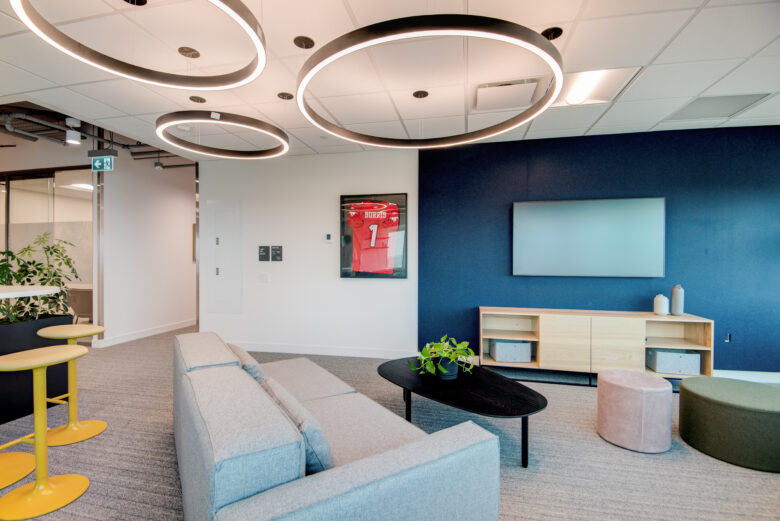
New Lutron lighting control design
New UPS N+1 Design and new LED Lighting Design
SERVICES
Mechanical Engineering | Electrical Engineering | Lighting Design | Communications & Security Design
PROJECT FEATURES
Size: 40,000 ft2 over two floors | Status: Completed 2023
LOCATION
Calgary, Alberta
KEY SCOPE ELEMENTS
Feasibility Study | Tenant renovation | Condensed construction schedule | WELL Gold certified
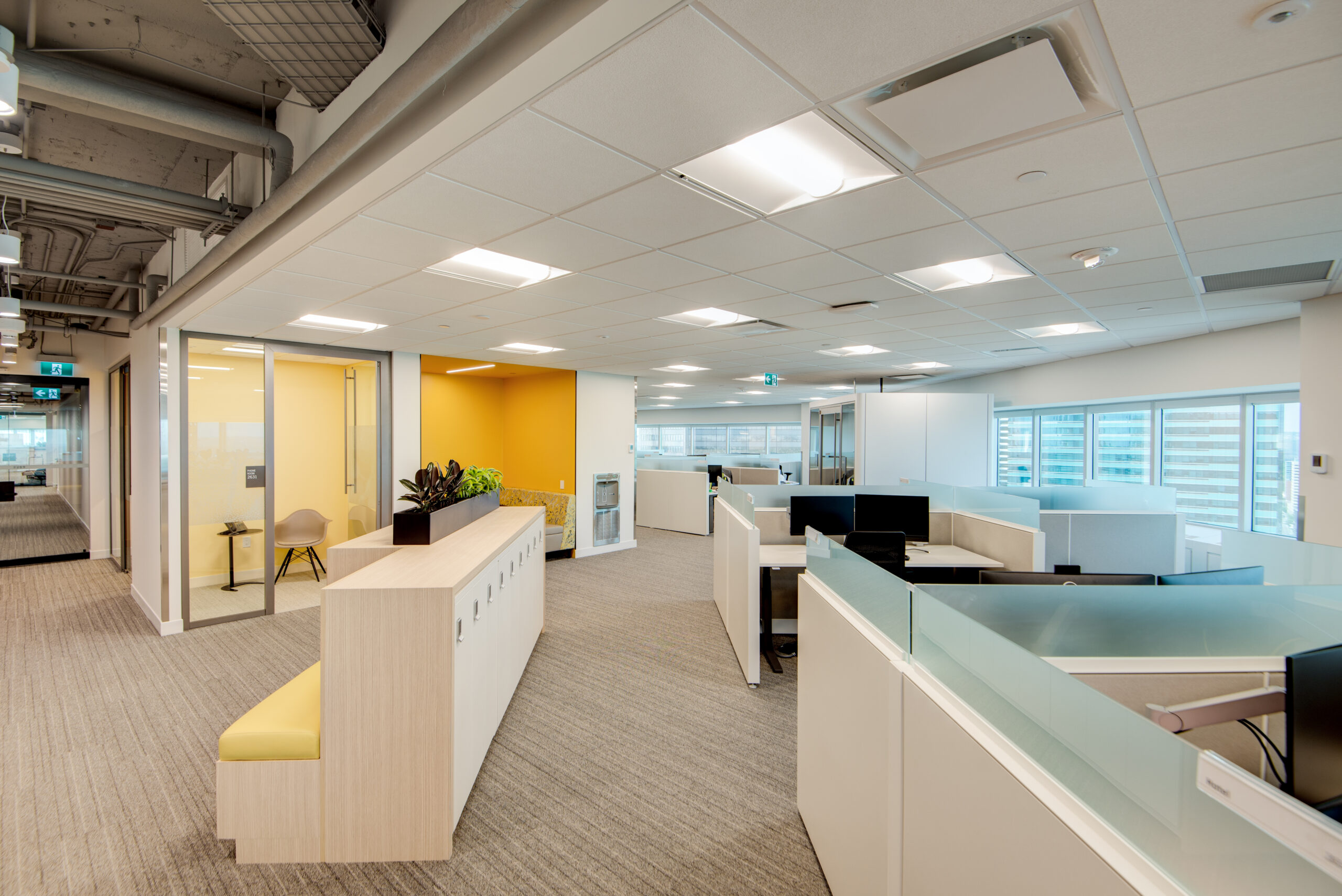
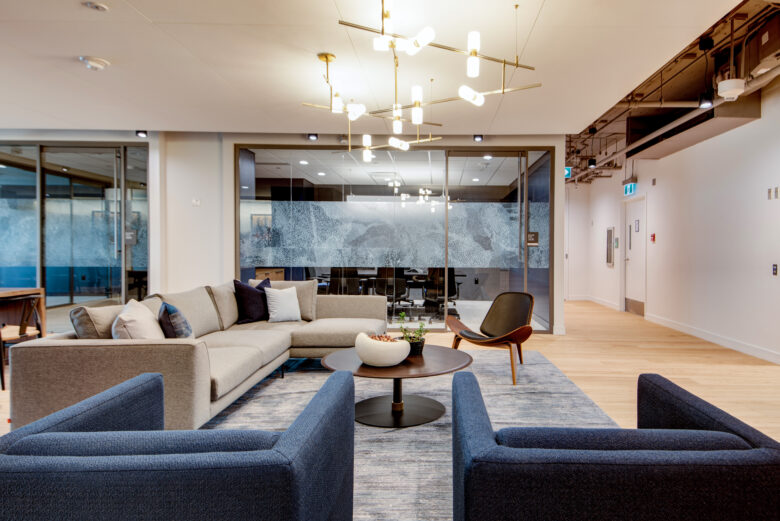
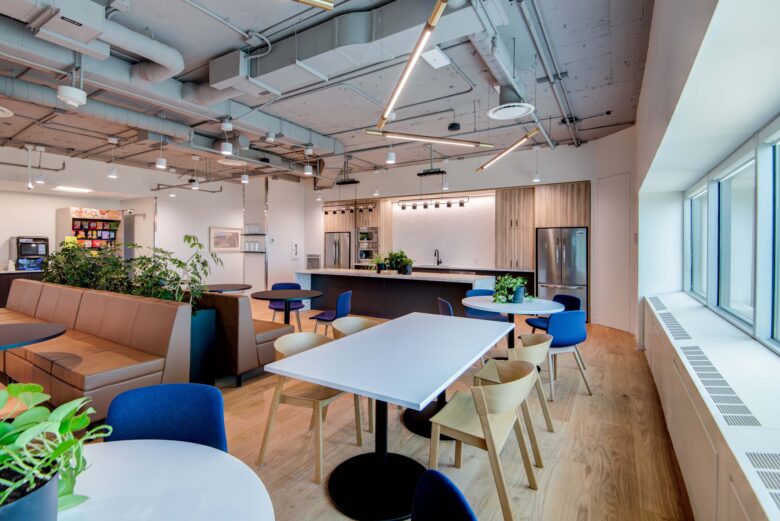
City of Toronto
Nathan Phillips Square Spirit Garden
The City of Toronto has been revitalizing areas of the City’s landmark Nathan Phillips Square at New City Hall. As part of the improvements, a new Teaching, Learning, Sharing, and Healing space was designed and constructed to recognize and honour the experience of Indian Residential School Survivors.
The project consisted of upgrades to existing surfaces with all new landscaping, including a water feature, large sculpture and public building.
HH Angus’ scope of work included mechanical and electrical engineering, security systems consulting, IMIT design, and commissioning. Specifically, the scope featured a full technical audit and inventory report to document all infrastructure and equipment impacted by the project; power supply for new landscape and other LED lighting fixtures; connection of new area drainage to existing storm systems in the parking level; mechanical and electrical services for the new 450 ft2 Teaching Lodge; and design of security systems for public spaces and the Teaching Lodge.
HH Angus also developed and prepared a commissioning plan for all mechanical and electrical equipment being installed during the project.
One of the interesting challenges of this project was working with multiple stakeholders to ensure the vision of all parties for the project was addressed.
SERVICES
Mechanical Engineering | Electrical Engineering | IMIT
design | Security Design | Commissioning
PROJECT FEATURES
Heritage site | Teaching lodge | New landscaping | Surface and parking improvements | Upgraded
existing exterior infrastructure
LOCATION
Toronto, Ontario
KEY SCOPE ELEMENTS
Technical audit | Inventory Report | Power supply | Connection to drainage area in underground parking level | M&E services for new teaching lodge | Design of security systems
King Animal Hospital
Fitout and Peer Review
The King Animal Hospital is a state-of-the-art multidisciplinary referral and emergency hospital for small animals and equines, complete with MRI’s and medical gas systems.
HH Angus provided mechanical consulting services for the fitout of the King Animal Hospital. Our scope of work included a peer review and report identifying potential gaps between the base building mechanical infrastructure and the programming and capacity requirements for the state-of-the-art animal hospital. Following the peer review and report, we provided full mechanical design services for the fitout, from schematic design through to construction administration and project close-out.
The fitout included approximately 60,000 FT2 in a 4-storey greenfield facility, accommodating a wide range of program elements including 8 operating rooms, 12 exam rooms, an MDRD sterilization room, laboratory and pharmacy, diagnostic imaging (MRIs, CT Scan) suites, hydrotherapy, and physiotherapy, as well as support and administrative spaces.
The sub-cellar is home to an equine treatment area with CT equipment outfitted with robotic arms, and an MRI with an adjacent horse lift. An arena will be used for equine physiotherapy. A large heated ramp from grade was selected over an animal elevator to provide a safer, and less stressful, mode of transportation for the horses when moving between floors. The small animal services area of the sub-cellar features three aquatic treadmills, a hydrotherapy pool, and a hyperbaric oxygen chamber.
The cellar level includes the staff gym, lounge, meeting areas, and a dog quarantine with an exam room and 17+ dog runs. Oxygen connections to the cages and foot baths in the floor support infection prevention and control.
The ground floor features an equine surgical area, including recovery, dirty surgery area (two surgeries performed simultaneously), and an equine water treadmill. It also houses a treatment area for dogs, cats and exotics, including dentistry area, and a canine showcase area with three surgery, CT, x-ray and neurological rooms with MRI equipment.
The second floor houses staff meeting spaces and amenities. A multipurpose space doubles as a surgical support area, Learning Centre, and workshop.
The base building infrastructure was in place prior to HH Angus joining the project, which meant our team was tasked with working in the confines of a building shell that was already in place. This presented challenges at the cellar level, where the team had to design while accounting for low floor to floor heights.
The hospital had not yet retained any permanent staff during the design stage, and many of the programming elements relied on recommendations from other consultants/doctors/experts during the design-stage user group meetings. Once permanent staff were hired for key departments, the design team worked with the client to make adjustments to the layouts and equipment based on staff input.
Although an animal hospital does not fall under the same CSA standards required for human
hospitals, there is a trend towards meeting those standards in animal care facilities. HH Angus wrote design briefs for systems and features that the client chose for this facility, many of which aligned with CSA requirements for a state-of-the-art human hospital.
SERVICES
Mechanical Engineering | Peer Review
PROJECT FEATURES
Size: 60,000 ft2 | Status: Completed 2024
LOCATION
King City, Ontario
KEY SCOPE ELEMENTS
Spaces for diagnostic imaging, hydrotherapy, surgery, physiotherapy, and support and administrative space | Therapy arena and pools | Staff amenities
Waypoint Centre for Mental Health Care
Chigamik Community Health Hub
Waypoint Chigamik Mental Health Centre is part of a redevelopment project and replaces two older facilities in use since the 1800s.
The challenges of this project included the requirement that the entire building be completely designed in one stage, rather than proceeding with design packages, plus delays in funding during the design process which resulted in a requirement for both a base building package and a fitout package.
To accomplish this, HH Angus coordinated two tender packages and two building permit submissions. Some detailed specifications in each package were interchangeable for the mechanical and electrical tender process. Working with phased schedules ensured that equipment start-up was fully coordinated between the tender packages.
The project faced additional challenges to provide an energy-efficient HVAC system, due to compliance with CSA Z317.2 and budget restrictions, as well as a small mechanical service space. To overcome these challenges, extensive coordination was implemented throughout the project across all disciplines.
SERVICES
Mechanical Engineering | Electrical Engineering | Lighting Design | ICAT Commissioning
PROJECT FEATURES
Size: 40,000 ft2 | DBFM | Fully ducted HVAC system designed to comply with CSA Z317.2 | Status: Completed 2020
LOCATION
Midland, Ontario
KEY SCOPE ELEMENTS
Building has full back up power with generator sized to accommodate the entire load of the building on loss of utility power conditions
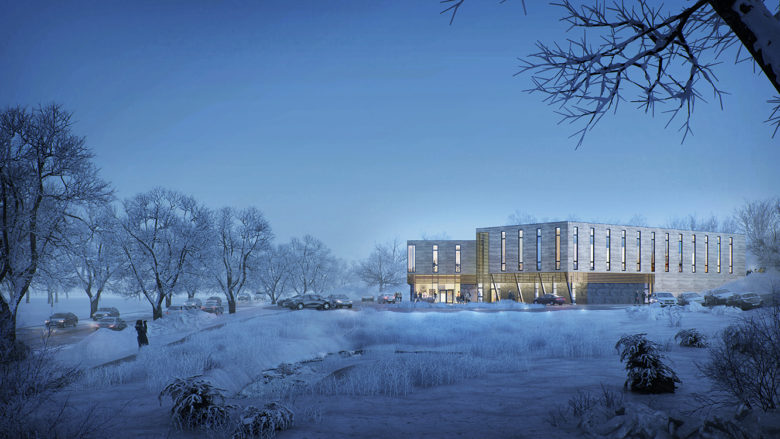
Efficient design
Several engineering designs were reviewed by the project team to ensure compliance with the owner’s goals and restrictions, while achieving an efficient design.
Customized spaces
The two-storey 40,000 ft2 mental health care facility has amenities for indigenous smudging ceremonies, physiotherapy, conferences, a community kitchen, gathering rooms, and a youth programming space.
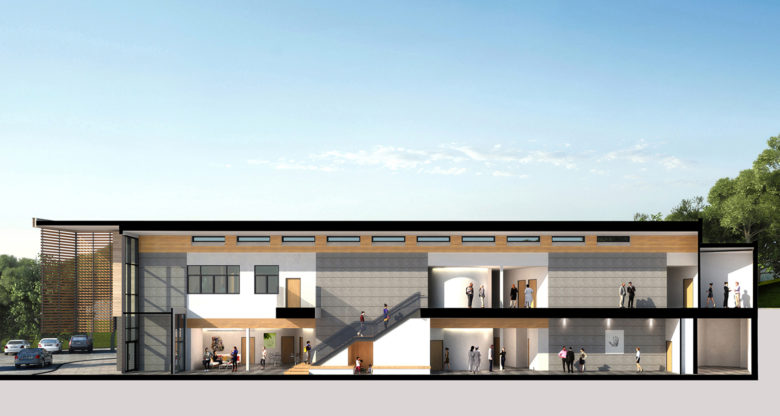
Renderings courtesy of Lett Architects Inc.
Confidential Client
Data Centre Campus (3 buildings)
The data centre campus is setting new standards for efficiency, significantly reducing energy consumption compared to the global average.
HH Angus was engaged to provide mechanical and electrical design and engineering services for the campus facility. Each of the three data centres is three storeys, and constructed with concrete slabs and structural steel. Continuous systems monitoring and secure DCIM controls will ensure optimal performance and reliability.
With three data centre buildings and one administrative building, ample space is provided for expansion, supported by adjacent access to a planned solar farm for sustainable energy supply. The data centre campus anticipates a combined capacity of approximately 100 - 125 MW.
SERVICES
Mechanical Engineering | Electrical Engineering
PROJECT FEATURES
3 data centre buildings and 1 administrative building | Status: Ongoing
LOCATION
Western Europe
KEY SCOPE ELEMENTS
Comprehensive connectivity | Robust security | Advanced cooling systems (flexibility of having air cooled or liquid cooled installations for higher densities) | Redundant A+B side power distribution | N+1 redundancy in cooling, UPS and generators

Sustainability Features
Engineered to excel in a challenging climate, the data centre will leverage utility green energy programs, solar and wind power purchase agreements, and certified carbon credits. By embracing passive sustainable design practices, the design goal was to minimize environmental impact while delivering reliable and efficient data services for the client.
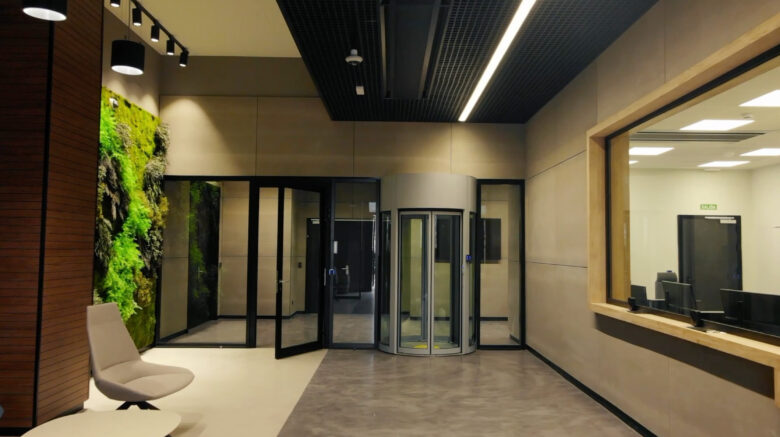
Proud Partnership
HH Angus has provided both recent and ongoing consulting engineering services to this client for additional data centre locations in Europe and the United States.



